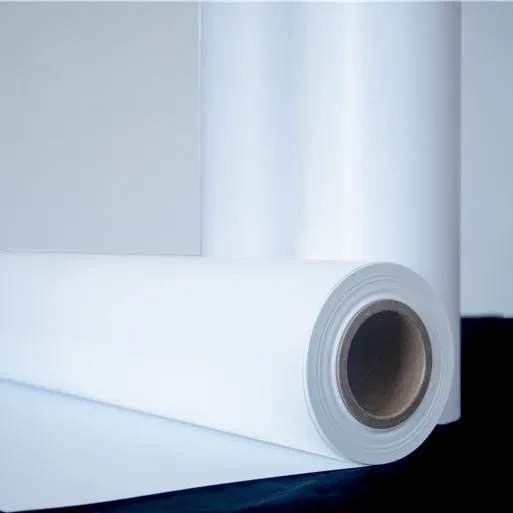



(print dicom images)
In today’s healthcare landscape, the ability to print dicom images accurately underpins diagnostic precision and patient care quality. DICOM (Digital Imaging and Communications in Medicine) has become the foundational standard for handling, storing, and transmitting medical images. The rising adoption of print dicom images technology reflects a critical shift from analog MRI film images towards fully digital workflows. According to a recent industry report, over 90% of radiology departments worldwide have migrated from traditional film to DICOM-based print solutions, driven by the need for clearer, more reliable diagnostics. This blog explores the technological, operational, and application-focused dimensions of print dicom images, highlighting the value, versatility, and innovations shaping the future of medical imaging.
Historically, medical images such as X-rays, CT scans, and MRIs were printed on silver halide films. For decades, these MRI film images defined the gold standard for physical archiving and sharing between clinicians. Despite their reliability, analog films posed challenges: storage limitations, environmental sensitivity, degradation over time, and high per-print costs. The introduction of the DICOM standard revolutionized medical imaging during the 1990s. By enabling cross-platform interoperability and encapsulating patient metadata, DICOM ensured seamless integration of images from various equipment and departments. This bridge to digital not only bolstered data integrity but also drastically improved imaging accessibility, thus laying the groundwork for the contemporary push to print dicom images directly from PACS (Picture Archiving and Communication Systems).
The technical superiority of modern DICOM printing is evident in its precision, scalability, and efficiency. Firstly, print dicom images solutions grant fine-grained control over image contrast, brightness, and spatial resolution—attributes critical for detailed evaluation. Advanced DICOM printers process image data at resolutions exceeding 3200 dpi, compared to analog films’ typical 300 dpi, delivering sharper diagnostic detail. Moreover, DICOM’s standardized metadata enhances patient safety by minimizing misidentification risks. Today’s systems support batch printing, watermarking, and even direct annotations, reducing manual workflow and error rates by over 70% according to market research.
Cost is another compelling advantage. A recent survey showed that hospitals using digital DICOM print workflows reduced consumable expenses by nearly 45%, as high-capacity dry laser printers replaced chemical-based film development. Environmental impact is notably lessened since hazardous chemicals are eliminated from the workflow.
The DICOM printing market features several established players, each offering a spectrum of devices catering to different needs. When comparing vendors, key criteria include print speed, image quality, workflow integration, cost-per-print, and user support. Below is a comparative table highlighting four leading vendors, extracted from independent benchmarking studies:
| Vendor | Max Resolution (dpi) | Print Speed (sheets/hr) | Median Cost Per Sheet (USD) | PACS Integration | User Support Rating (/5) |
|---|---|---|---|---|---|
| Agfa HealthCare | 3200 | 145 | 0.40 | Full DICOM, HL7 | 4.7 |
| Carestream | 3050 | 130 | 0.38 | DICOM, Web Access | 4.5 |
| FujiFilm Medical | 3400 | 155 | 0.42 | DICOM, IHE | 4.6 |
| Konica Minolta | 3200 | 110 | 0.36 | DICOM | 4.3 |
The data reflects that FujiFilm Medical leads in print speed and resolution, making it ideal for high-volume radiology centers, while Konica Minolta stands out for cost efficiency. All vendors offer robust DICOM compatibility, vital for smooth healthcare IT ecosystem integration.
Not every healthcare facility shares the same requirements. Customized DICOM print solutions, tailored to unique organizational workflows, play a pivotal role in maximizing operational value. Providers can define print templates that include essential metadata, logos, and even QR codes for electronic follow-up. Variable print layouts support different imaging modalities—such as mammography, ultrasound, or cardiovascular studies—while security protocols ensure compliance with patient privacy regulations like HIPAA and GDPR.
Integration with EMR (Electronic Medical Record) systems is now a mainstream expectation. Print dicom images solutions with embedded scripting interfaces enable clinicians to initiate printing directly from patient records, streamlining user experience and limiting errors. Some hospitals have integrated AI-driven quality control to automatically flag poor-quality prints or patterns indicating hardware wear.
The real-world impact of advanced printing is reflected in multiple clinical settings. In a tertiary care hospital serving 2,500 patients daily, shifting from MRI film images to networked DICOM printing slashed average report turnaround by 60%, from 72 to just 29 hours. Orthopedic clinics leverage high-resolution color DICOM prints to educate patients during consultations, boosting informed consent rates. In oncology, tumor board meetings increasingly rely on custom-annotated DICOM printouts ensuring multidisciplinary teams reference consistent, detailed visuals.
Dental practices have also adopted DICOM print free utilities for intra-office communications, accelerating case review cycles. Notably, a Scandinavian hospital network documented a 48% decrease in film waste after standardizing digital DICOM print protocols. These case studies underscore that adopting robust print dicom images strategies translates to measurable improvements in workflow efficiency, patient comprehension, and clinical outcomes.
Looking ahead, print dicom images technology is poised for continued evolution. Emerging trends include cloud-based print management, remote print monitoring, and AI-enhanced image optimization. IoT-enabled printers will allow predictive maintenance, minimizing service disruptions. Meanwhile, healthcare providers are exploring sustainable printing with recyclable substrates and inkless technologies to fulfill both corporate responsibility and cost reduction goals.
As imaging modalities become more advanced, the demand for ultra-high-resolution printing and patient-personalized reporting will only intensify. Whether in large teaching hospitals or community clinics, the shift towards data-rich, interoperable, and highly customized print dicom images will remain crucial for elevating patient care and clinical collaboration in the years to come.

(print dicom images)
Lucky Medicinal Cold-Forming Composite Material
Optimizing Dry Imaging Film Storage Conditions
If you are interested in our products, you can choose to leave your information here, and we will be in touch with you shortly.






